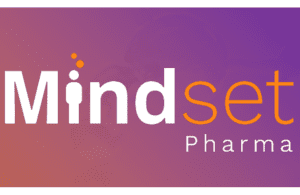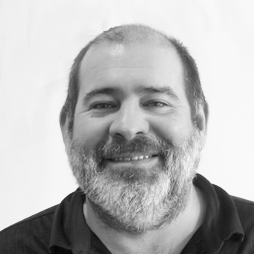 Focused on developing therapies for neuropsychiatric and neurological disorders, Mindset Pharma (CSE:MSET/FSE:9DF) has identified three families of next-generation psychedelics.
Focused on developing therapies for neuropsychiatric and neurological disorders, Mindset Pharma (CSE:MSET/FSE:9DF) has identified three families of next-generation psychedelics.
Families 6, 7 and 8 are chemically distinct, small molecule non-tryptamine scaffolds. Tryptamine hallucinogens include LSD, DMT and psilocybin. Mindset Pharma has filed provisional patent applications for the three families.
The Toronto-based company had already announced it had four families of investigational psychedelic compounds. The first includes a psilocybin-like conjugate known as MSP-1014.
The second family includes high-potency, short-acting psilocybin-like compounds, while the third includes a low-potency, long-duration compound for micro-dosing.
To learn more about the new compounds and Mindset Pharma in general, we reached out to Chief Scientific Officer Joseph Araujo. He provided an overview of what sets Mindset apart from the competition in the therapeutic psychedelic space, including its alliance with Otsuka.
What sets Mindset Pharma apart from the competition in the psychedelic therapy space?

Joseph Araujo [Image courtesy of Mindset Pharma]
Araujo: Our strategy at Mindset has been to carve out whitespace for psychedelic molecules with respect to IP. Our goal is to use a data-driven approach to pharmacologically characterize novel molecules that fall into various IP categories to understand how they could potentially be used as medicines down the road — whether those are psychedelic or not.
Our first family was the low-hanging fruit, including deuterated psilocybin-like compounds and prodrugs of psilocybin.
We began moving a little further away from that psilocybin/psilocin backbone structure with Families 2 and on with these sidechain-restricted analogs. So what we see with Family 2 are these much more potent and potentially stronger acting compounds, but with an anticipated shorter duration of action.
Family 3 is the mirror opposite of Family 2. These long-acting compounds have very low activity at the serotonin 2A receptor. We then applied that sort of chemistry that we have used in Families 1, 2 and 3 and applied them to dimethyltryptamine (DMT) and 5-methoxy-N, N-dimethyltryptamine. Many people in the space were talking about the need for shorter-acting compounds, so DMT and 5-methoxy DMT being potent, short-acting known psychedelics seemed like a good place to start. We have a range of compounds that differentiate from 5-methoxy DMT. They’re showing a potentially improved safety profile. Families 4 and 5 are related and focused on DMT and 5-methoxy DMT.
What inspired the discovery of the new psychedelic families?
Araujo: With the families beyond the first five, we’ve taken a step further away from the tryptamine structure. This is partially related to just carving out IP in the space. We’ve always felt that those who are there first will have a significant benefit if they can find protectable molecules and then characterize them using a data-driven approach.
Families 6, 7 and 8 are not tryptamine structures per se. We’re screening them through serotonergic assays and seeing some differentiated serotonin receptor activating profiles compared to what we saw with some of our earlier families.
What do you know now about about Mindset’s psychedelic families 6, 7 and 8?
Araujo: It is really early. We expect these compounds to potentially be psychedelic. They certainly have 2A activity. And we are seeing reduced 2B activity, which people are concerned about — especially if there is going to be repeated dosing.
But at this stage of the discovery of those compounds, I do not think we have enough data to confidently or comfortably speak to how these new Families are going to differentiate compared to other compounds.
Hopefully, in the near future, we’ll be able to speak more about how these compounds might differ from a more traditional psychedelic tryptamine.
How do you characterize the burgeoning psychedelic therapy industry?
Araujo: There’s a lot of pattern recognition with what happened in the cannabis space.
It’s going to be very difficult for companies, if not almost impossible, to protect what they’re doing from a commercial perspective with psilocybin and known tryptamines that have been available and known about for decades, if not centuries.
The other challenge is if you look at the literature and, you know, even books like TiHKAL, there are many compounds in the public space that are also not protected but where there’s very little data.
I think the challenges are from an IP perspective — trying to find open IP space. Very often, there will be a race to new and protectable IP. Outside of that, you often have a race to generic drugs with potentially novel formulations.
It’s really difficult to see how companies developing molecules based on psilocybin will be able to protect those assets in the long term, beyond potentially some market protection if they get a claim with a regulatory agency.
How do you see the competitive landscape evolving in the burgeoning psychedelic industry?
Araujo: Ultimately, we’ve seen in the sort of nutraceutical or natural product space that it is really easy to create copycat products and use data generated by others to get into the market fairly quickly. That would be a very large generic market. Companies that can carve out novel IP with tryptamines that basically have never been synthesized previously will have an advantage.
Ultimately, it will be companies looking at multiple tryptamines using medicinal chemistry approaches with feedback from pharmacological studies that gain inherent knowledge in the chemistry of these compounds. We don’t have that knowledge today. We have more clinical data with psilocybin than we have preclinical data for it.
The patent debate is pretty clear in my mind. It isn’t easy to patent things that are known. But on the other hand, formulation patents are easy to break. So it’ll be composition of matter patents on truly novel molecules that will stand the test of time in the IP space.
Ultimately, that will provide a lot more opportunities to understand what the best psychedelic is — whether that’s with respect to a specific indication or for a specific patient population within an indication.
The idea of precision medicine with psychedelics is certainly something that will require us to look at multiple compounds and have assays to evaluate those.
What can you share about MSP-1014, the drug candidate that is furthest along in your pipeline?
Araujo: MSP-1014 is from our Family 1 group of compounds. These include deuterated and prodrug analogs of psilocin/psilocybin.
MSP-1014 is a prodrug. What excited us about 1014 is that, when benchmarking with psilocybin in preclinical models, we saw an absence of effects that we saw with higher doses of psilocybin.
Psilocybin reduced body temperature dramatically in mice. We didn’t see that with 1014. We also looked at target engagement models — things like head twitch that are models of serotonin 2A engagement that have been reasonably good predictors of a psychedelic drug. We’re seeing much larger effects following the administration of 1014 compared to psilocybin.
The data suggest that 1014 will be a psychedelic compound — probably fairly similar to the experience you would get after being administered psilocybin, but there could be some improvements in tolerability. We didn’t see those activity changes we didn’t see as large a fluctuation in body temperature. We’re going to the clinic next with this molecule. If that can translate into an easier experience for the patient, that would ultimately be an important improvement upon the original molecule.
What do you make of the renewed interest in ketamine/esketamine for depression?
Araujo: I think what ketamine has done that will be beneficial for the serotonergic/psychedelic market is that it has demonstrated that you can take what’s traditionally been a controlled substance and began to set up a framework for being able to treat patients within a clinic. That could be things like injection therapy with monitoring.
That will likely be something that we see with psychedelic compounds as well.
It’s still early days, but a framework is being carved for that approach of providing medicines to patients where it’s not a drug you take once every day for the rest of your lifetime.
That is going to be important in the evolution of how psychedelic medicines will be administered.
Many people have done a lot of heavy lifting in terms of beginning to pave that road for what this will look like from a medicinal perspective. But, as that work continues, it is possible to get a clearer picture. There could be some durable and life-changing effects.
But well-controlled clinical trials will have to demonstrate that there’s a reason for considering these types of products over more traditional products.
You have a really interesting conundrum because with drugs like psilocybin and LSD, there’s quite a bit of data that suggests these drugs are generally safe. How do you balance that data with having to stay in a clinic?
I think a lot of it will be gaining comfort and relying on modern-day data collection.
But ultimately, if the goal is to help more patients, not everybody will have access to clinicians trained to administer psychedelics. Not everybody can take time to work within a clinician’s schedule. Finding ways to get treatments to people who need them the most when they need it will also be an important part of this. And I do like to think that it will happen once we’ve shown safety and efficacy.
Can you provide an overview of Mindset’s psychedelic partnership with Otsuka?
Araujo: From the beginning, we’ve been completely focused on developing patent protectable, novel, psychedelic-like drugs or non-psychedelic drugs based on what’s more classically psychedelic chemical backbones.
Our belief was that this would be where Big Pharma would look in the future.
We thought they would find it hard to see value in a drug that wasn’t patentable or a drug where there would be a very rapid generic market developing.
We’ve been fortunate to have this collaboration with Otsuka. They’re a very forward-looking pharma company.
The partnership with Otsuka relates to Mindset families 2 and 4, which are shorter-acting psychedelics expected to be true psychedelic molecules that induce a psychedelic experience.
Otsuka will be collaborating with us, and we’ll pay all expenses to move those compounds forward through IND-enabling studies, manufacturing and Phase 1a and Phase 1b studies.
There was an upfront payment of $5 million. This is completely non-diluted to us.
Thanks to this collaboration, Mindset is working very closely with a large team of domain experts across the entire value chain of not just discovering but developing drugs and moving into clinical trials. In addition, Otsuka has deep expertise in psychiatry.
The upfront payment allowed Otsuka to look at these compounds and consider a larger licensing deal after Phase 1. It gives them the option to be at the forefront of this novel chemical entity race of psychedelics in a way that can bring them to market and help the most patients. We’re thrilled to be working with them.
Otsuka is a company that has shown interest in the psychedelic field in several ways. They had made an early investment into Compass Pathways and licensed a ketamine product for Japan. If they’re correct on their bets and this does change the landscape for psychiatry, then I think you’ll see other big pharma companies follow suit.